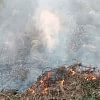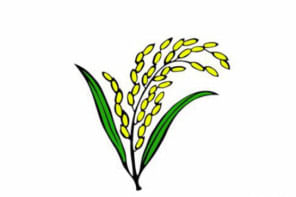Integrating our conservation and adaptation approaches

Just before the coronavirus showed itself in China, Bangladesh did something unprecedented. On November 13, 2019, its parliament unanimously adopted a "planetary emergency" motion where climate change crisis and biodiversity loss crisis were brought together to deal with urgently. The motion was placed by Saber Hossain Chowdhury, the then-chair of the parliamentary standing committee on the environment ministry. But four years on, do we see such a combined approach when we think of actions towards these two crises?
The simplest example of such a joint action would be protecting the Sundarbans, by doing which we not only conserve its rich biodiversity, but also ensure that this 7,000-year-old mangrove forest removes sufficient carbon dioxide from the atmosphere and acts as an armour against cyclones and coastal floods. At the project level, the Community-Based Adaptation in the Ecologically Critical Areas through Biodiversity Conservation and Social Protection Project (CBA-ECA Project, 2010-2015) of the Department of Environment (DoE) is one of the first projects directly addressing both crises. But as many other projects will confirm, we either tried to protect biodiversity or to adapt to climate change, not both.
Of course, exceptional approaches are there, such as the Ecosystem-based Adaptation (EbA). To adjust to climate change, when we use nature's or ecosystems' processes or biodiversity, we call it EbA. Examples include expanding our coastal green belt through mangrove plantation so that increased visits from cyclones do not harm us too much, practising floating agriculture to ensure food security by tackling waterlogging, restoring the natural water bodies of our municipalities as a part of flood control, and planting trees in the upstream hilly area so that water is stored there despite projected low rainfall in the future.
Nevertheless, over the last five years, one approach took shape quite strongly in relation to climate change and biodiversity conservation: Nature-based Solutions (NbS). NbS in fact brings together many ecosystem-related activities, including EbA. NbS is essentially using biodiversity and ecosystems to tackle many of our critical problems, like food insecurity, poverty, and climate change. The beauty of NbS is that along with benefitting us, a good NbS intervention benefits our biodiversity too. So, in short, NbS is a much wider concept, while EbA is one kind of NbS, focusing on climate change adaptation.
Speaking of adaptation, participatory or people-oriented adaptation has long been in the conversation and practice. Built on other community-based approaches, such as community-based natural resource management (CBNRM), community-based adaptation (CBA) has been well-established in the adaptation venture worldwide, especially in Bangladesh. That inspired leading climate expert Dr Saleemul Huq to call Bangladesh the "adaptation capital of the world," and prompted Ban Ki-moon to brand this country the "best teacher" in adaptation.
This has changed lately. In 2019, international think tanks started defining a new concept called Locally Led Adaptation (LLA). Here, the focus is on the people of the smallest administrative or governance units (say upazilas or unions for Bangladesh), rather than on "community," and leadership is given to people living within those boundaries. But at the same time, public and private stakeholders outside that unit are linked for inclusive, well-thought out, well-funded, effective, flexible, and sustainable adaptation actions.
NbS and LLA are framed, nurtured, and popularised by two different groups of experts, globally. But both concepts operate in climate change space and have clear guiding principles to follow. Made up of eight criteria and 28 indicators, IUCN's Global Standard for NbS can be used to design, monitor and evaluate an NbS intervention, while LLA is guided by eight principles to be followed in a wide range of situations. Both approaches also strongly focus on inclusive governance, knowledge-based management, economic capability, and sustainability of the actions taken. In recent national planning processes, Bangladesh's National Adaptation Plan (NAP2050) and Mujib Climate Prosperity Plan (MCPP2041) also focus on both approaches, but separately. So, what would a combination of these two approaches look like?
In late 2023, UNDP Bangladesh tried such an integration as a part of developing its Sundarbans Area-Based Programme (SABP). In Khulna city, diverse stakeholders came together to identify NbS interventions best for the Sundarbans catchment area, and attempted to articulate their effectiveness by using eight LLA principles. Later on in Dhaka, government officials, researchers, NGOs, CSOs, think tanks, UN agencies, and development partners explored the benefits, challenges, and opportunities of an NbS-LLA integration, keeping in mind the globally important ecosystem called the Sundarbans.
This multi-stakeholder exercise is one of the first ones in the world and showed that i) at conceptual level, we could integrate NbS and LLA; ii) our knowledge and understanding of such combined approaches is improving; iii) to some extent, we have the necessary capacity, skills and tools needed for such an integration; and most importantly, iv) despite our organisational and strategic differences, we are eager to collaborate on an NbS-LLA integration. Now it is the time to urgently design, fund and implement NbS programmes in ecologically important and climate-vulnerable areas by following LLA principles to get maximum benefits and lasting outcomes.
Dr Haseeb Md Irfanullah is an independent consultant working on environment, climate change, and research system; a visiting research fellow at the University of Liberal Arts Bangladesh (ULAB). He can be reached at [email protected]
Views expressed in this article are the author's own.
Follow The Daily Star Opinion on Facebook for the latest opinions, commentaries and analyses by experts and professionals. To contribute your article or letter to The Daily Star Opinion, see our guidelines for submission.

 For all latest news, follow The Daily Star's Google News channel.
For all latest news, follow The Daily Star's Google News channel. 











Comments